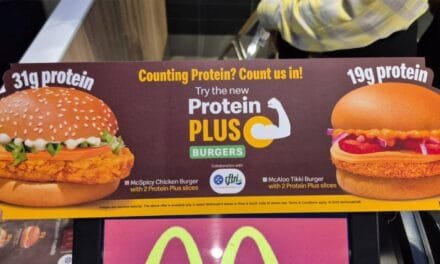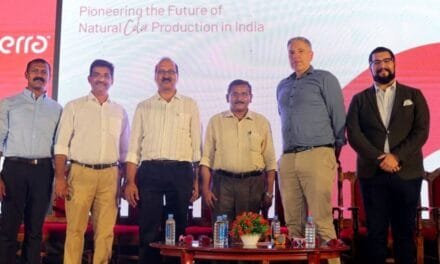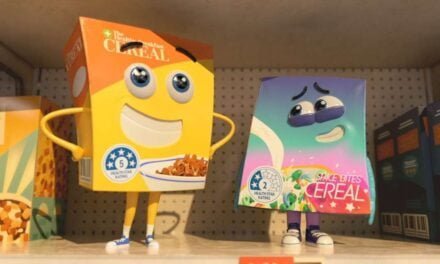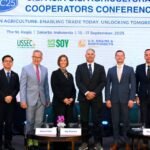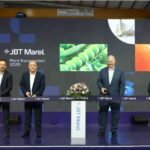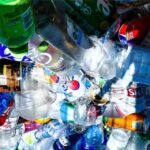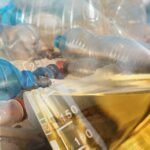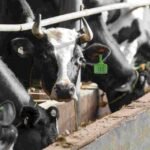“There is a need to introduce sustainable packaging material and design. The ideal food packaging would need to be safe, secure, and sustainable for the immediate future.”
Packaging solution has become a major trend in the food packaging sector. Thus, in the short and medium-term future, there will be advancements in packaging material with recycled content, biodegradable material, and recyclable polymers, said Jeevaraj Pillai, co-chair, PHDCCI packaging committee and joint-president, packaging and new product development, Uflex. He spoke on the first day of the virtual international conference on the advancements and challenges in the food packaging industry on 23 March.
The event was organised by the PHD Chamber of Commerce and Industry and supported by the Ministry of Micro, Small, and Medium Enterprises.
Pillai said the food packaging sector advancements have largely been due to the industry’s attempt to face the challenges head-on. “Today, the industry is under pressure to look at the current product portfolio and propose changes to make it more sustainable,” he said.
He added that while the government has issued sustainability guidelines on a compliance basis, the FSSAI has also taken up the responsibility of an enabler to help implement the key recycling requirements proposed in the plastic management rules.
During his keynote address, Dr. Tanweer Alam, director of the Indian Institute of Packaging (IIP), said that the packaging industry in India is now worth USD 35-billion. The number is expected to double in the next five to 10 years.
“The pandemic has proved the importance of packaging more than ever,” he said. “Today, retailers are struggling to meet the efficient packaging demand from the consumers. This shows that packaging and distribution have become more important than ever.”
He said the ideal food packaging would need to be safe, secure, and sustainable for the immediate future. It needs to be eco-friendly with good barrier properties.
So, there is a need to introduce sustainable packaging material and design. “If we can make biodegradable plastic cost-effective, there will be a huge demand for it,” he said.
Jean-Marc Dore, president of packaging vertical MEDEF, spoke about food packaging trends in France. MEDEF, or the Mouvement des enterprises de France, or the Movement of the Enterprises of France, is the largest employer federation in France.
Dore said the European food packaging market is worth 180-billion euros, while the packaging machinery market is worth 11.6-billion euros.
He said the French food packaging industry had been actively involved in sustainable development for the last 25 years, with a material recycling rate of 68% for the household part and even more for industrial and commercial packaging.
In his keynote address, Rohan Wijesinghe, president of the Sri Lanka Institute of Packaging, spoke on the global perspective on food packaging. He said the growth in food packaging has led to stringent regulations by the governments to ensure the quality and safety of the products. Thus, packaging materials need to meet the ever-tightening standards.
“This is a challenge for the industry. For example, until now, biodegradable polymers have replaced only 5% of plastic. So, we have a long way to go,” he said.
He added that life-cycle inventory evaluation could be a practical guideline for sustainability. It includes sourcing and using raw material, material consumption and wastage, resource consumption, and recycling.
“The next generation of food packaging should contribute to reducing waste as well as resources. The use of sustainable or green packaging has the potential to reduce the impact,” he said.
Speaking on sustainable paper for food packaging, PN Sridharr, DGM, sustainable products & packaging, ITC, explained that paper is repetitively available, grown in an environment-friendly way, economically viable, and is FSC-, PEFC-certified. The paper also doesn’t harm the environment during the conversion process. It also has the least possible carbon footprint.
On how to move towards sustainable paper packaging, Sridharr gave the example of CII GreePro Ecolabel. It is a type I eco-label for paper/paperboard packaging. Sridharr said it has a holistic product life-cycle framework and identifies environmentally preferable products. He added that GreenPro is in line with the UN environmental guidelines on providing product sustainability.
Packaging solution has become a major trend in the food packaging sector. Thus, in the short and medium-term future, there will be advancements in packaging material with recycled content, biodegradable material, and recyclable polymers, said Jeevaraj Pillai, co-chair, PHDCCI packaging committee and joint-president, packaging and new product development, Uflex. He spoke on the first day of the virtual international conference on the advancements and challenges in the food packaging industry on 23 March.
The event was organised by the PHD Chamber of Commerce and Industry and supported by the Ministry of Micro, Small, and Medium Enterprises.
Pillai said the food packaging sector advancements have largely been due to the industry’s attempt to face the challenges head-on. “Today, the industry is under pressure to look at the current product portfolio and propose changes to make it more sustainable,” he said.
He added that while the government has issued sustainability guidelines on a compliance basis, the FSSAI has also taken up the responsibility of an enabler to help implement the key recycling requirements proposed in the plastic management rules.
During his keynote address, Dr. Tanweer Alam, director of the Indian Institute of Packaging (IIP), said that the packaging industry in India is now worth USD 35-billion. The number is expected to double in the next five to 10 years.
“The pandemic has proved the importance of packaging more than ever,” he said. “Today, retailers are struggling to meet the efficient packaging demand from the consumers. This shows that packaging and distribution have become more important than ever.”
He said the ideal food packaging would need to be safe, secure, and sustainable for the immediate future. It needs to be eco-friendly with good barrier properties.
So, there is a need to introduce sustainable packaging material and design. “If we can make biodegradable plastic cost-effective, there will be a huge demand for it,” he said.
Jean-Marc Dore, president of packaging vertical MEDEF, spoke about food packaging trends in France. MEDEF, or the Mouvement des enterprises de France, or the Movement of the Enterprises of France, is the largest employer federation in France.
Dore said the European food packaging market is worth 180-billion euros, while the packaging machinery market is worth 11.6-billion euros.
He said the French food packaging industry had been actively involved in sustainable development for the last 25 years, with a material recycling rate of 68% for the household part and even more for industrial and commercial packaging.
In his keynote address, Rohan Wijesinghe, president of the Sri Lanka Institute of Packaging, spoke on the global perspective on food packaging. He said the growth in food packaging has led to stringent regulations by the governments to ensure the quality and safety of the products. Thus, packaging materials need to meet the ever-tightening standards.
“This is a challenge for the industry. For example, until now, biodegradable polymers have replaced only 5% of plastic. So, we have a long way to go,” he said.
He added that life-cycle inventory evaluation could be a practical guideline for sustainability. It includes sourcing and using raw material, material consumption and wastage, resource consumption, and recycling.
“The next generation of food packaging should contribute to reducing waste as well as resources. The use of sustainable or green packaging has the potential to reduce the impact,” he said.
Speaking on sustainable paper for food packaging, PN Sridharr, DGM, sustainable products & packaging, ITC, explained that paper is repetitively available, grown in an environment-friendly way, economically viable, and is FSC-, PEFC-certified. The paper also doesn’t harm the environment during the conversion process. It also has the least possible carbon footprint.
On how to move towards sustainable paper packaging, Sridharr gave the example of CII GreePro Ecolabel. It is a type I eco-label for paper/paperboard packaging. Sridharr said it has a holistic product life-cycle framework and identifies environmentally preferable products. He added that GreenPro is in line with the UN environmental guidelines on providing product sustainability.



